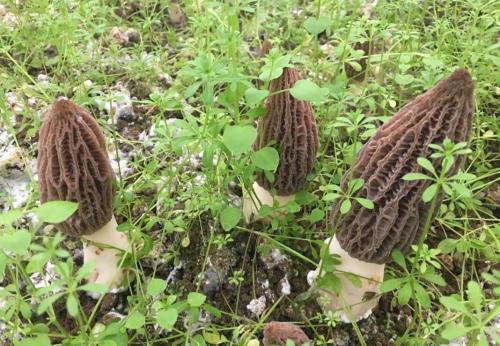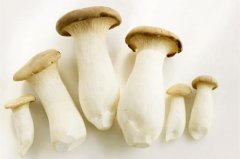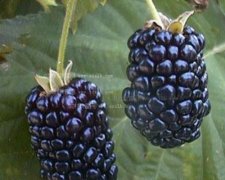Cultivation techniques of Morchella: planting methods and conditions of Morchella
What are the benefits of Morchella? Why so many people grow Morchella. How to grow Morchella? Do you want to know? Let's get to know it.

According to the determination of Morchella, every 100 grams of Morchella contains 28.1 grams of crude protein, 4.4 grams of crude fat, as many as 20 kinds of amino acids, vitamins and minerals are also very rich, some nutrients exceed the content of Cordyceps sinensis, is a high-grade natural health food, known as "the crown of food".
Morchella is one of the most valuable edible fungi in the world, which is an advanced nutritional tonic. It has the functions of tonifying kidney, strengthening yang, tonifying brain and refreshing, and can obviously improve impotence and sexual dysfunction. Long-term consumption can prevent cancer, anti-cancer, prevent colds and increase body immunity, which has important development value in medicine. Morchella has a unique flavor, delicious taste and rich nutrition.
I. Biological environment
1. Temperature, humidity. Morchella is a low-temperature and high-humidity fungus, which occurs frequently after rain from March to May and occasionally from August to September. The growing period is long, which requires not only a lower temperature, but also a larger temperature difference to stimulate mycelium differentiation. The temperature of mycelium growth is 21 ℃ 24 ℃, the temperature of fruiting body formation and development is 4.4 16 ℃, and the relative humidity of air is 65% 85%. For this reason, the cultivation time should be from November to December.
two。 Rizhao. Weak scattered light is beneficial to the growth and development of fruiting body. Avoid strong direct light.
3. Soil. The pH value of soil should be 6.5-7.5, neutral or slightly alkaline is beneficial to the growth of Morchella. Morchella often grows in limestone or chalk soil. It can grow in humus, black or yellow loam and sandy mixed soil.
4. Air. Morchella rarely occurs in the dark and in the thick deciduous layer. Adequate oxygen is essential for the growth and development of Morchella.
II. Formula of cultivation materials
① sawdust 75%, wheat bran 20%, phosphate fertilizer 1%, gypsum 1%, humus 3%. ② cottonseed hull 75%, wheat bran 20%, gypsum 1%, lime 1%, humus 3%. ③ corncob, sawdust, bean husk, wheat bran, phosphate fertilizer, gypsum, sugar and plant ash. ④ crop straw powder 74.5%, wheat bran 20%, phosphate fertilizer 1%, gypsum 1%, lime 0.5%, humus 3%. The ratio of material to water of the culture material is 1 ∶ 1.3 and the water content should be 60%.
III. Cultivation techniques
(1) unbagged cultivation of clinker
1. According to the ratio of material to water, the mixture was mixed with 1 ∶ 1.3 and then accumulated and fermented for 20 days. The bacteria can be added in 17cm × 33cm polypropylene or polyethylene plastic bags, each bag 500g 600g, sterilized under the condition of 100℃ for 8 hours. Using two-end inoculation method, the mouth of the bag was sealed and cultured at 22: 25 ℃ for 30 days, the mycelium could grow into the bag. The mycelium can be cultivated 5-6 days after the mycelium is full.
two。 Outdoor unbagged cultivation. Choose woodland where the light is one-third of yang and seven percent of shade. The bed is 1 meter wide and 15-20 cm deep. After finishing the bed, spray or gently water once, and use 10% lime water to kill pests and miscellaneous bacteria in the border. The management method of removing bag and expelling bacteria stick and mushroom production is the same as indoor cultivation, except that the bottom layer can not be covered with plastic film. Pay attention to the temperature change in the border to prevent direct sunlight.
3. Indoor unbagged cultivation. The mushroom house was cultivated immediately after disinfection. First, cover each bed with plastic film, which is covered with 3 cm thick humus soil. After flattening, the bacteria sticks that take off the plastic bags are arranged on the bed one by one. There are 40 plastic bacteria bags of 17 cm × 33 cm per square meter of the bed. After discharging the bacteria stick, gently spray water once, that is, cover the soil with 3 cm 5 cm, cover the surface with 2 cm thick bamboo leaves or deciduous leaves of broad-leaved trees, keep the soil moist, and fruit bodies can grow after 1 month. Mushroom production is the best in the southern region from March 10 to April 20.
(2) Outdoor raw material cultivation
Outdoors, choose a site that is one-third of yang and seven of yin or half of yin and half of yang, with loose, moist soil and good drainage, and dig a pit 20 to 25 centimeters deep. Wet the bottom of the pit with water, mix the prepared cultivation materials with water, spread a layer of material on the bottom, flatten it to 4cm 5cm thick, use 2 bags of bacteria (12cm × 28cm) per square meter, break into walnut-sized bacteria, spread them evenly on the material, and cover them with a thin layer of fine humus soil. Then spread the second layer of material on it, the thickness is still 4cm, flatten it and then sow it in the same way. After sowing, it is covered with loose humus soil with a thickness of 3 cm to 5 cm and covered with a layer of broad-leaved leaves. After covering, sprinkle water and cover some branches on the leaves.
(3) Prevention and control of diseases and pests
Diseases and insect pests will occur in the growth of mycelium and fruiting body, which give priority to prevention and keep the site environment clean and hygienic. The site sterilization and insecticidal treatment was carried out before sowing, and if insect pests occur in the later stage, pyrethrum or 10% lime water can be sprayed before the fruiting body grows.
(4) Post-planting management
Morchella likes to be wet, and the growing environment must be kept humid. In outdoor cultivation, in winter, especially in early spring, Rain Water is more, and the temperature is suitable, then the mycelium and fruiting body grow well. If there is a drought in early spring, it must be watered at the right time. The temperature of 4-16 ℃ in early spring can stimulate the formation of fruiting body, and if the temperature changes sharply (lower than 4 ℃ or higher than 16 ℃), it will affect the development of fruiting body. In a word, maintaining suitable rhyme temperature and humidity for Morchella in early spring is the key to successful cultivation.
(5) picking, processing and preservation
The fruiting body matured 7-10 days after being unearthed, and the color changed from dark gray to light gray or brownish yellow. The honeycomb depression on the cover surface can be harvested when it is fully extended. After harvest, the soil should be cleaned, dried or dried in time, and sealed and preserved in plastic bags. Do not break the bacterial cap when drying. Can use flue-cured tobacco room drying or sun-drying, do not use firewood smoking, so as not to affect the quality. After grading according to quality, pack it in a plastic bag and store it in a cool, dry and ventilated place.
It turns out that Morchella has so many benefits! Now you know the nutritional value of Morchella, and you also know the cultivation techniques of Morchella. Will you grow Morchella?
- Prev

Cultivation of Pleurotus eryngii: what are the answers to common questions in the cultivation of Pleurotus eryngii
Pleurotus eryngii is a common edible fungus, and many problems are often encountered in the cultivation of Pleurotus eryngii. Here are some common questions for you. I hope it will be helpful to you. 1. How to deal with the problem of many fruiting bodies but low commodity rate of Pleurotus eryngii? If there is no mushroom thinning
- Next

BlackBerry planting techniques: introduction to BlackBerry planting conditions and whether BlackBerry is easy to grow
BlackBerry can bear fruit in the same year when it is planted, and the yield per mu can be stabilized at about 1750 kg after entering the high yield period in the third year. It is rich in sugar, fruit acid and a variety of vitamins, but also contains a variety of mineral elements, with anti-aging and improve human immunity and other effects. What about the BlackBerry?
Related
- Fuxing push coffee new agricultural production and marketing class: lack of small-scale processing plants
- Jujube rice field leisure farm deep ploughing Yilan for five years to create a space for organic food and play
- Nongyu Farm-A trial of organic papaya for brave women with advanced technology
- Four points for attention in the prevention and control of diseases and insect pests of edible fungi
- How to add nutrient solution to Edible Fungi
- Is there any good way to control edible fungus mites?
- Open Inoculation Technology of Edible Fungi
- Is there any clever way to use fertilizer for edible fungus in winter?
- What agents are used to kill the pathogens of edible fungi in the mushroom shed?
- Rapid drying of Edible Fungi

